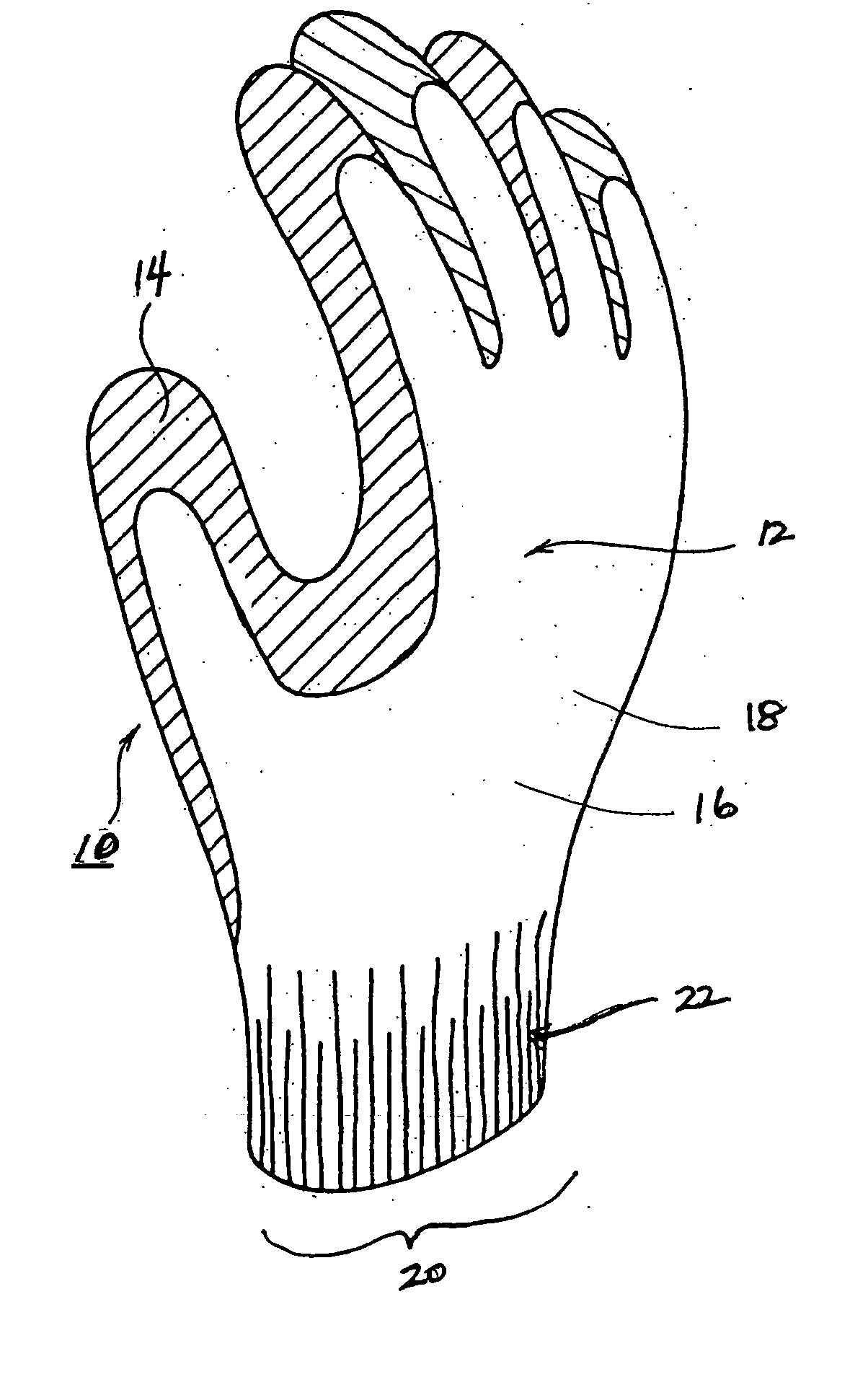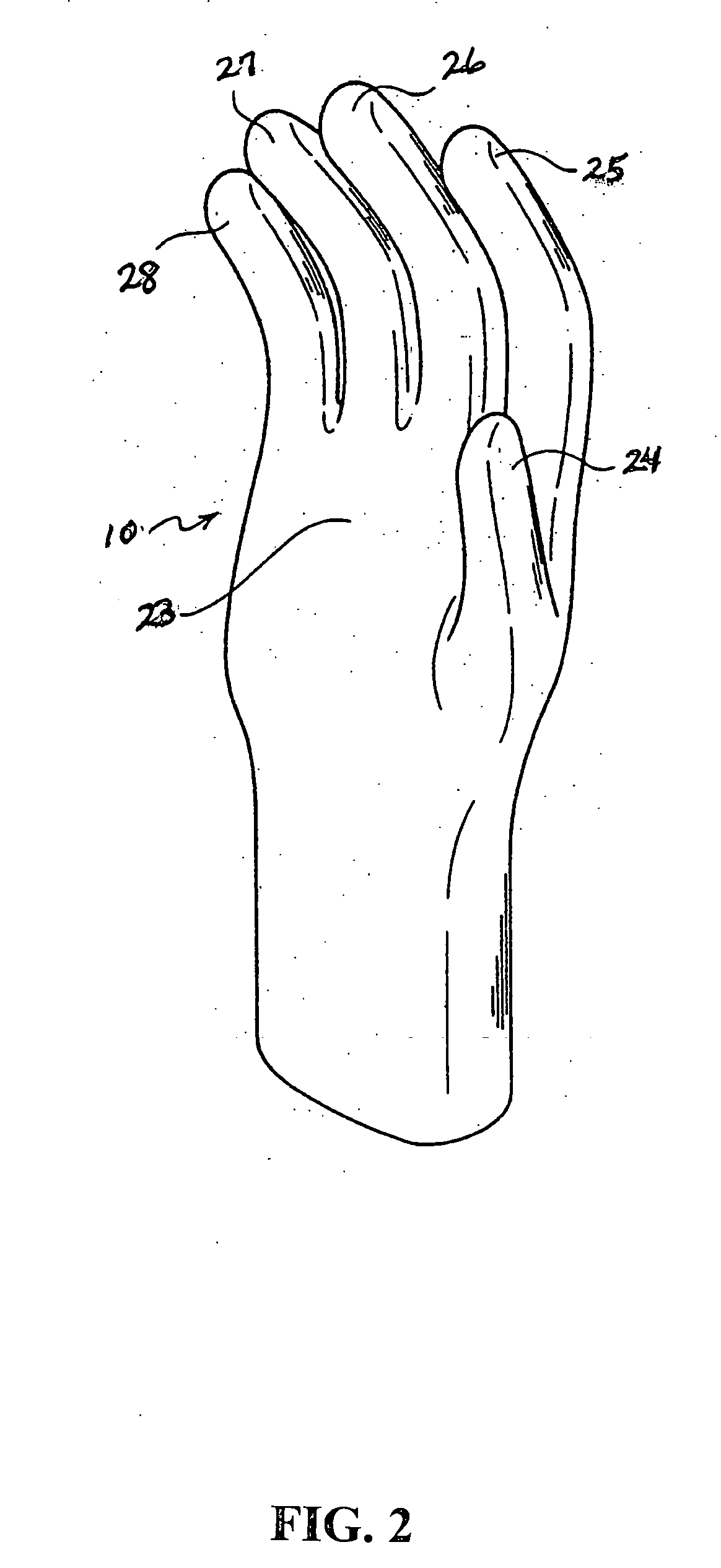Breathable protective articles
a protective article and breathable technology, applied in the field of breathable protective articles, can solve the problems of not being able to breathe as easily, not being able to adapt to prolonged exposure to wetness or hazards, not being able to adjust to the shape etc., to achieve the effect of improving the gripping or non-skid properties of the protective article, facilitating skin breathing, and facilitating the passage of air
- Summary
- Abstract
- Description
- Claims
- Application Information
AI Technical Summary
Benefits of technology
Problems solved by technology
Method used
Image
Examples
example 1
[0168] A protective article of the present invention in the form of a glove is formed as follows: A first section made from a point unbonded spunbond laminate material is ultrasonically welded to a stretch-bonded laminate (SBL) sheet using a Branson 920 IW ultrasonic welder. The point unbonded spunbond laminate forms the palm-side or front of the glove, while the SBL sheet forms the back of the glove. The point unbonded spunbond laminate was formed by thermally bonding together a polypropylene spunbond web, a breathable film sheet, and a bicomponent spunbond web. A breathable film sheet was placed in between the spunbond webs. The polypropylene spunbond web had a basis weight of 0.5 osy. The bicomponent spunbond web was made from bicomponent filaments having a polyethylene component and a polypropylene component in a side-by-side relationship. The bicomponent spunbond web had a basis weight of 2.5 osy. The breathable film sheet was made from a linear low density polyethylene contain...
example 2
[0172] In this example, a glove as described in Example 1 is constructed, however, the bicomponent spunbond sheet of the point unbonded spunbond laminate had a basis weight of 3.6 osy. During the point unbonded process, the top bond roll was heated to 270° F., while the bottom bond roll was heated to 240° F.
example 3
[0173] A glove is constructed similar to the glove described in Example 1. In this embodiment, however, the bicomponent spunbond sheet of the point unbonded spunbond laminate was a through air bonded bicomponent fibrous web having a basis weight of 1.8 osy. The bicomponent filaments contained a polyethylene component and a polypropylene component in a side-by-side relationship. During the point unbonded process, the top bond roll was heated to 260° F. while the bottom bond role was heated to 240° F. After the glove was formed, the glove was inverted so that the textured nubs as described in Example 1 were placed on the outside.
PUM
| Property | Measurement | Unit |
|---|---|---|
| length | aaaaa | aaaaa |
| seam width | aaaaa | aaaaa |
| seam width | aaaaa | aaaaa |
Abstract
Description
Claims
Application Information
 Login to View More
Login to View More - R&D
- Intellectual Property
- Life Sciences
- Materials
- Tech Scout
- Unparalleled Data Quality
- Higher Quality Content
- 60% Fewer Hallucinations
Browse by: Latest US Patents, China's latest patents, Technical Efficacy Thesaurus, Application Domain, Technology Topic, Popular Technical Reports.
© 2025 PatSnap. All rights reserved.Legal|Privacy policy|Modern Slavery Act Transparency Statement|Sitemap|About US| Contact US: help@patsnap.com



